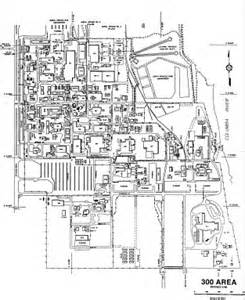Radioactive Waste 48 - USDOE Hanford 300 Area - Part 2 of 4
Notes on public meeting held at the Seattle University Heights Center on July 31, 2013 by the United States Department of Energy (USDOE) at Hanford to explain planned cleanup of Hanford 300 Area and solicit public comment.
Part 2 of 4
A Hanford rep started off the official presentation with a few slides of the site and a very general overview. Apparently six alternatives were being considered. They were
- Do nothing
- Watch closely
- Dig up and dispose of some dirt and phase in use phosphates to bind the uranium in the soil in above the groundwater, watch closely
3a. Dig up dirt and use phosphates to bind the uranium in the soil over entire area of concern, watch closely
- Dig down to level of the top of groundwater when the river is lowest in some areas and dispose of dirt in, watch closely
- Dig down to level of the top of groundwater when the river is lowest in broad areas and dispose of dirt in watch closely
Following that intro, a Hanford geologist came on and gave a very detailed technical presentation with lots of dense slides and technical jargon. He went over details of different problems on the site, the way that uranium moves underground, groundwater levels and flows, remediation methods, problems with dust in digging up and carting off the dirt, details of the phosphate soil binding and so on. On the question of why they didn’t just dig up the contaminated soil down to thirty feet, he said that the amount of water that they would have to spray on the site to keep the dust down would wind up causing even more uranium to leach into the ground water than if they left it alone.
According to the geologist’s explanation, there was no danger to the people using the area and Hanford authorities had a good plan that should work. There seemed to be some confusion about the timeline. The plan said that the uranium levels should be safe for drinking water in about thirty years. However, the geologist said that he felt more confident with a number like fifty years. That is quite a difference! They were going to do a review in five years and see if it was working. Unfortunately, if it was not working in five years, they had no alternative plan.
There were a number of other pollutants that had been identified in the 300 Area soil such as tritium, radioisotopes of cesium, strontium, and cobalt as well as chemicals such as polychlorinated biphenyls and trichloroethylene which are very dangerous. While these are going to being monitored, there were no plans for cleaning them up. The presentation and cleanup plan were strictly for uranium.
There was too much technical detail and jargon in the geologist’s presentation for anyone who was not a nuclear engineer. He was supposed to present his part in about twenty five minutes but it took more like fifty minutes putting the meeting way beyond schedule. When it was time for Q & A, there as discussion of going on to the formal comment section first but it was decided to have a short Q & A. The management of this meeting reminded me of the recent Magnuson Park meetings on radioactive contamination there.
For more information on 300 Area at Hanford:
Article from Hanford USDOE about 300 Area
Article about Hanford 300 Area from EPA
